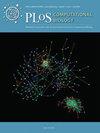利用基于生态系统的方法了解细菌病原体的传播:首个空间现实元群落模型
IF 3.8
2区 生物学
Q1 BIOCHEMICAL RESEARCH METHODS
引用次数: 0
摘要
细菌、真菌和病毒等病原体是土壤和水生生物群落的重要组成部分,它们可以从腐烂和存活的有机物中获益,并可能伺机感染人类和动物宿主。三分之一的人类传染病是由土壤或水生生态系统中的自然居民--无细胞病原体引起的。它们能够在宿主以外的环境中长期存在和繁殖。然而,由于有关无脊椎疾病的生态学研究并不常见,流行病学模型更是罕见,因此目前可获得的信息非常少。在医学和兽医学研究中,它们的重要性以及自由环境形式与致病形式之间的关系都被忽视了。在这里,我们利用现实水生元群落系统中的动力学模型,以导致布路里溃疡的人类病原体溃疡分枝杆菌为对象,分析了沙门氏菌病的传播。我们的研究表明,杆菌在水生生态系统中的持续存在是由季节性上游供应驱动的,而细胞在水生生物体上的附着和发育对这种病原体的持续存在和种群动态至关重要。我们的研究工作构成了第一套无丝体疾病传播的元群落模型,而且具有高度灵活性,可适应其他类型的无丝体疾病。无脊椎病原体对动物和人类疾病负担的重要性需要更好的理解,也需要新的无脊椎疾病生态学模型来指导对这组重要病原体的管理和预防。本文章由计算机程序翻译,如有差异,请以英文原文为准。
Understanding the transmission of bacterial agents of sapronotic diseases using an ecosystem-based approach: A first spatially realistic metacommunity model
Pathogens such as bacteria, fungi and viruses are important components of soil and aquatic communities, where they can benefit from decaying and living organic matter, and may opportunistically infect human and animal hosts. One-third of human infectious diseases is constituted by sapronotic disease agents that are natural inhabitants of soil or aquatic ecosystems. They are capable of existing and reproducing in the environment outside of the host for extended periods of time. However, as ecological research on sapronosis is infrequent and epidemiological models are even rarer, very little information is currently available. Their importance is overlooked in medical and veterinary research, as well as the relationships between free environmental forms and those that are pathogenic. Here, using dynamical models in realistic aquatic metacommunity systems, we analyze sapronosis transmission, using the human pathogen Mycobacterium ulcerans that is responsible for Buruli ulcer. We show that the persistence of bacilli in aquatic ecosystems is driven by a seasonal upstream supply, and that the attachment and development of cells to aquatic living forms is essential for such pathogen persistence and population dynamics. Our work constitutes the first set of metacommunity models of sapronotic disease transmission, and is highly flexible for adaptation to other types of sapronosis. The importance of sapronotic agents on animal and human disease burden needs better understanding and new models of sapronosis disease ecology to guide the management and prevention of this important group of pathogens.
求助全文
通过发布文献求助,成功后即可免费获取论文全文。
去求助
来源期刊

PLoS Computational Biology
BIOCHEMICAL RESEARCH METHODS-MATHEMATICAL & COMPUTATIONAL BIOLOGY
CiteScore
7.10
自引率
4.70%
发文量
820
审稿时长
2.5 months
期刊介绍:
PLOS Computational Biology features works of exceptional significance that further our understanding of living systems at all scales—from molecules and cells, to patient populations and ecosystems—through the application of computational methods. Readers include life and computational scientists, who can take the important findings presented here to the next level of discovery.
Research articles must be declared as belonging to a relevant section. More information about the sections can be found in the submission guidelines.
Research articles should model aspects of biological systems, demonstrate both methodological and scientific novelty, and provide profound new biological insights.
Generally, reliability and significance of biological discovery through computation should be validated and enriched by experimental studies. Inclusion of experimental validation is not required for publication, but should be referenced where possible. Inclusion of experimental validation of a modest biological discovery through computation does not render a manuscript suitable for PLOS Computational Biology.
Research articles specifically designated as Methods papers should describe outstanding methods of exceptional importance that have been shown, or have the promise to provide new biological insights. The method must already be widely adopted, or have the promise of wide adoption by a broad community of users. Enhancements to existing published methods will only be considered if those enhancements bring exceptional new capabilities.
 求助内容:
求助内容: 应助结果提醒方式:
应助结果提醒方式:


